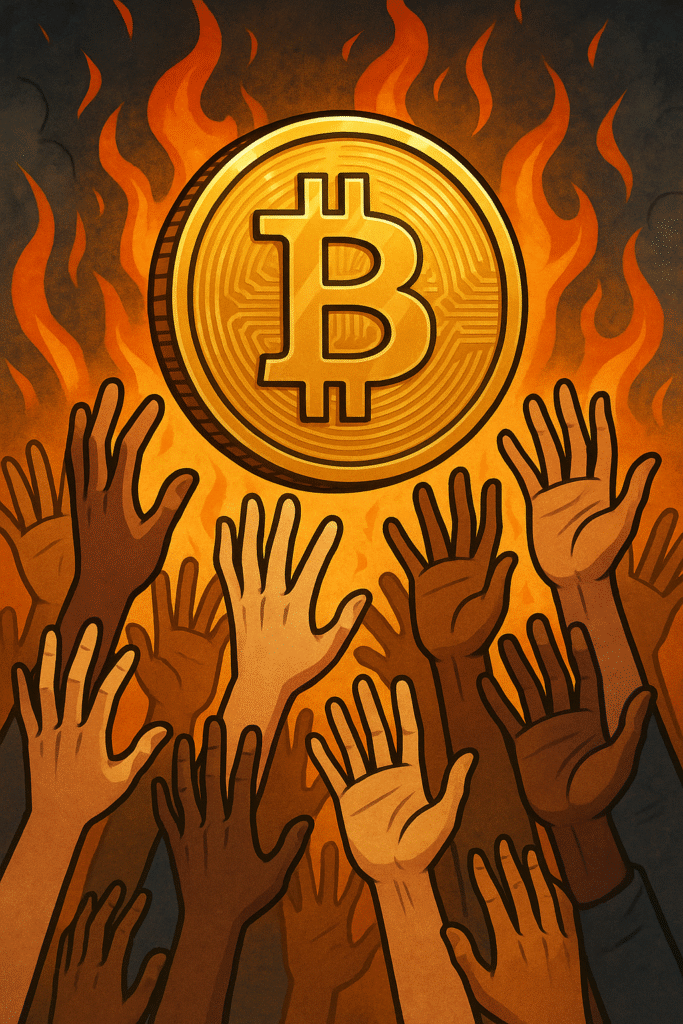
Bitcoin Explained: A Step-by-Step Guide
**Introduction**
Since its creation in 2009, As the first cryptocurrency, it opened the door to a new era of digital finance that challenges traditional banking systems and offers a decentralized form of money. In this comprehensive step-by-step guide, we will explore what Bitcoin is, how it works, how you can acquire and use it, and the potential advantages and challenges that come with it. Whether you are a beginner or someone looking to deepen your understanding, this article will provide a solid foundation in Bitcoin basics.

**Step 1: Understanding Bitcoin**
Bitcoin is a type of digital currency, also known as cryptocurrency. Bitcoin differs from traditional currencies like the US Dollar or Euro in two key ways: it exists solely in digital form and is decentralized, operating independently of any single institution or government.
Bitcoin was invented by Satoshi Nakamoto. The goal was to create a peer-to-peer electronic cash system that could function without relying on a central authority.
Key features of Bitcoin:
* **Decentralized**: Operates without a central bank.
* **Limited Supply**: limited supply – 21 million .
* **Digital and Borderless**: Can be sent or received anywhere in the world.
* **Secure**: Based on blockchain technology and cryptography.

—
**Step 2: How Bitcoin Works**
Bitcoin operates on a technology called **blockchain**. A blockchain is a public, distributed ledger that records all Bitcoin transactions.
Here’s how it works:
1.**Transaction initiation occurs when a user sends a Bitcoin transaction request to the decentralized network for verification and processing. 2. **Verification**: Miners verify the sender balance and that the transaction is valid.
3. **Block Creation**: Verified transactions are bundled into a “block” by miners.
4. **Mining**: Miners solve complex mathematical puzzles. The first to solve it adds the block to the blockchain and is rewarded with new Bitcoins.
5. **Finalization**: The transaction is confirmed and recorded permanently on the blockchain.
**Step 3: Getting Started with Bitcoin**
To start using Bitcoin, follow these initial steps:
**1. Get a Bitcoin Wallet**
A wallet is a software or hardware tool that stores your Bitcoin.
* **Hot Wallets**: Connected to the internet (e.g., mobile apps, desktop wallets).
* **Cold Wallets**: Offline storage (e.g., hardware wallets, paper wallets).
Popular wallets include:
* Electrum
* Exodus
* Ledger Nano S (hardware)
* Trezor (hardware) * Trust Wallets * Phantom Wallets * Metamask Wallets
**2. Acquire Bitcoin**
There are several ways to get Bitcoin:
* **Buy from Exchanges**: Coinbase, Binance, Kraken, and other platforms let you purchase Bitcoin using fiat currency.
* **Peer-to-Peer Transactions**: Buy directly from individuals. * **Bitcoin ATMs are like regular ATMs, but instead of withdrawing cash, you can buy Bitcoin. * **Mining**: Use specialized hardware to validate transactions and earn Bitcoin (not recommended for beginners).

**Step 4: Using Bitcoin**
If you’ve Bitcoin, you can used it in various ways :
**1. Make Payments**
Some merchants and online retailers accept Bitcoin. Websites like Overstock and Newegg, or services such as Namecheap, accept Bitcoin.
**2. Transfer Money**
Bitcoin is a fast and low-cost method for sending money internationally, avoiding traditional banking fees and delays. **3. Investment**
Many investors buy and hold Bitcoin, expecting its value to appreciate over time.
**4. Trade or Exchange**
Bitcoin can be exchanged for a variety of other digital currencies or traditional fiat currencies, such as US dollars or euros, through specialized online trading platforms.
**5. Earn Bitcoin**
Some platforms and freelance websites pay in Bitcoin. Examples include:
* Bitwage
* Lolli (cashback rewards)
* Various crypto-affiliate programs * Binance *Coinbase *Bybit
**Step 5: Storing Bitcoin Safely**
Security is crucial in the Bitcoin world. Since there is no “forgot password” option if you lose access to your wallet, careful storage is essential.
**Tips for Secure Storage**:
* Use **hardware wallets** for large amounts.
* Enable **two-factor authentication (2FA)**. * Store private keys and seed phrases in a safe place.
* Use **reputable software wallets**.
* Never share your private key.

**Step 6: Understanding Bitcoin Mining**
* The mining process involves validating Bitcoin transactions, adding them to the blockchain ledger, and creating new Bitcoins as an incentive for miners to secure the network.
**How Mining Works**:
* To validate transactions and create new blocks, miners employ powerful computer systems to solve complex mathematical puzzles that secure the Bitcoin network.
* When a miner solves the puzzle , they’re rewarded .
* The miner is rewarded with newly minted Bitcoin.
Mining requires significant investment in hardware and electricity. Today, it’s dominated by large mining farms with specialized equipment (ASICs).
**Step 7: Legal and Regulatory Considerations*
* ** The legal status of Bitcoin varies globally, with different countries having different regulations.
* **Legal and regulated**: USA, Canada, EU countries.
* **Restricted**: China, India (partial restrictions).
* **Banned**: Countries like Algeria, Morocco, and Bolivia.
Always research local laws before buying or using Bitcoin. Some governments require identity verification (KYC) when buying from exchanges.
**Step 8: Pros and Cons of Bitcoin**
**Pros**:
* **Decentralization**: No control by any single entity.
* **Transparency**: Public blockchain.
* **Lower Fees**: Especially for international transfers.
* **Accessibility**: Open to anyone with internet access.
* **Potential for Profit**: Long-term investment growth.
**Cons**:
* **Volatility**: Prices can fluctuate dramatically.
* **Security Risks**: Hacking, scams, or lost keys.
* **Scalability**: Limited transaction speed.
* **Regulatory Risks**: Uncertain legal status in some countries.
—
**Step 9: Bitcoin vs. Other Cryptocurrencies**
Bitcoin was the first, but many other cryptocurrencies have emerged:
* **Ethereum (ETH)**: Smart contracts and decentralized apps.
* **Litecoin (LTC)**: Faster transactions.
* **Ripple (XRP)**: Bank-to-bank transfers.
* **Bitcoin Cash (BCH)**: Faster transactions.
Bitcoin remains the most recognized and widely adopted, but each altcoin has unique use cases.
—
**Step 10: The Future of Bitcoin**
Bitcoin has already made a significant impact, and its future is closely watched by investors, developers, and regulators.
**Potential Developments**:
* **Mainstream Adoption**: More companies and individuals using Bitcoin.
* **Improved Scalability**: Lightning Network and other layer 2 solutions.
* **Regulatory Clarity**: Government policies becoming clearer.
* **Integration with Financial Systems**: Use in ETFs, payment apps.
—

Website : https://gamingusdt.com/
Presale Website : https://presale.gamingusdt.com/
Telegram Channel : https://t.me/gamingusdg
Telegram Discussion Group : https://t.me/gamingusdgdiscussion
X (Twitter) : https://x.com/Gamingusdg
Instagram : https://www.instagram.com/gamingusdg/

